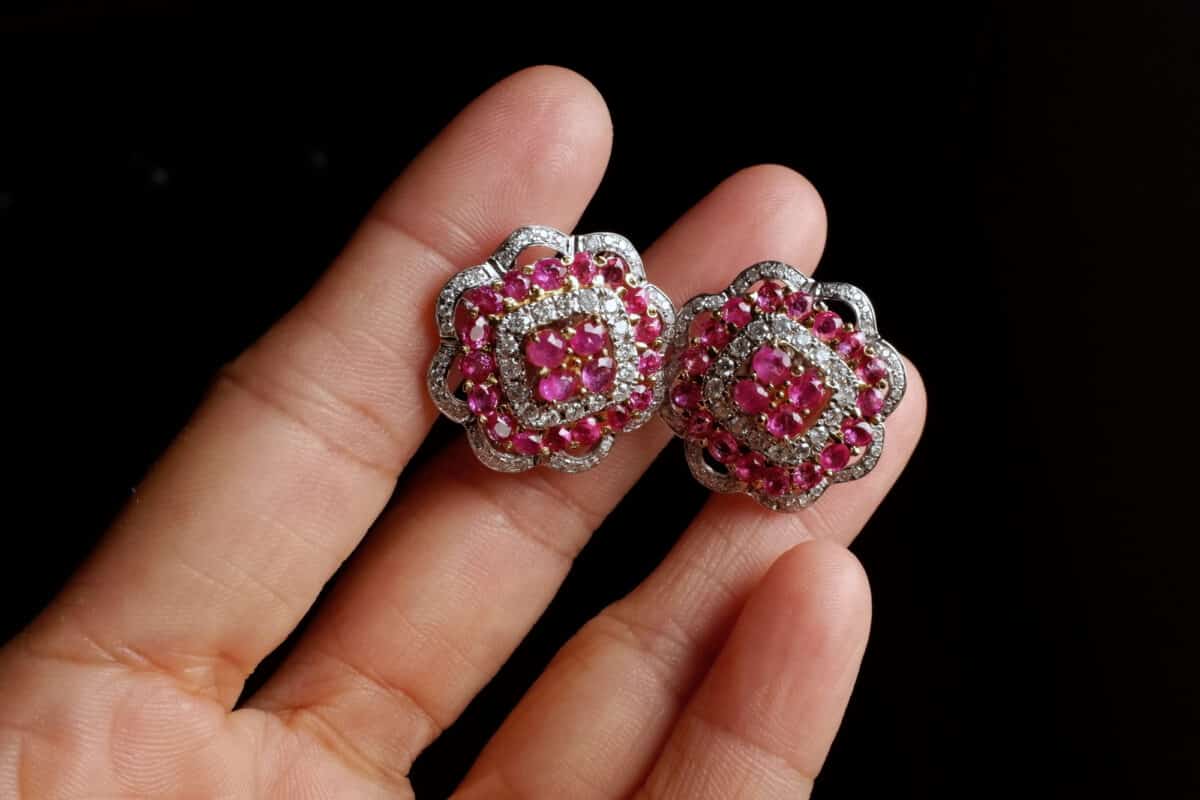
Developed by UK engineering company Viritech, the Apricale is a zero-emission hydrogen-powered hypercar based on an innovative fuel cell system supported by a lightweight but highly efficient battery.
In the case of the Apricale, this powertrain allows to achieve hypercar-level performance, but at less than half the weight of typical BEV hypercars.
The Project
One of the distinticive elements of the Apricale development process was the incredibly fast development times, which posed major challenges to both Pininfarina and Viritech, and required innovative and unusual design processes and a coordinated effort between the UK company and the Italian design and engineering teams.
The Apricale was set to make its debut at the Goodwood festiaval of Speed in June, so the development was designed around that deadline.
The concept was not intended just a static model: the development was based on a working testing prototype already developed by Viritech, and the car had to be 100% production-ready – which made the strict deadlines even more challenging.
Design Brief
With the Apricale project the main goal for Viritech was not just to create a hypercar but also to present the smallest, lightest version of their technology, which in the future could be successfully used for other transportation applications such as commercial trucks.
The Pininfarina design team was asked to come up with a complete design language while using the prototype as a technical basis for the project.
The goal for the designers was to create something really special, capable of touching people’s emotions.
Prototype and Project Constraints
While the design of the vehicle had to be unique and quite different from the starting body design of the test-mule, at the same time the design team had to work with a lot of hard points: these included the main package and dimensions, the chassis with the integrated hydrogen tank, the greenhouse and glass areas, the door openings.
Given these constraints, most design decisions had to be jointly reviewed by Viritech and Pininfarina, in order to evaluate the possible technical changes and to find the best balance between design, functionality and production feasibility.
The working test mule was also used as a benchmark for all the different tests throughout the entire design development.
Concept
In the exploratory phase, Pininfarina designers worked on many different iterations in form of hand design sketches in parallel with 3D SubD concept models.
The design team presented 5-6 possible directions, each one with a completely different design language, yet maintaining the same hard points and meeting all the different technical requirements.
Among the presented proposals, two were shortlisted as possible directions, and the final decision was to greenlight the hypercar design language that was more easily understandable by the public. Choosing a less shocking – yet beautiful – design theme also allowed to put the accent on the message about the technology rather than on the pure aesthetic impact, which could better served Viritech’s objectives.
Interestingly, the other design variations were not completely discarded: in the future they might be used for customers who want an exclusive, tailor-made one-off model, which is possible thanks to Pininfarina’s expertise in manufacturing high end, exclusive bespoke cars.
Design Development
At its core, the final design has a simple layout: it consists of a main sensual volume, with short front fenders and long rear fenders, fused together into a single fuselage.
A preliminary concept, blocked out in 3D using SubDs, was used for a preliminary CFD validation – which is usually based on the final CAS model. This was a unique element which allowed the team to move forward with confidence and in a faster way.
After the preliminary validation, the front and rear ends were detailed in parallel to maintain the theme and achieve a strong identity.
Aerodynamics
A very distinctive element of the design is the innovative approach in regards to aerodynamics.
The design brief was to avoid too many wings and minimize the air openings, as these are usually associated with conventional sportscars powered by internal combustion engines.
At the same time, the vehicle required a lot of air openings: while clean energy vehicles are usually associated with a clean look, hydrogen-powered cars actually need even more cooling than traditional sportscars, so this task was a challenge in itself.
The solution to these problems came in the form of an innovative approach in the overall surface treatment.
The body is divided into two disjointed layers: a top one which includes the fuselage and the fenders, and a lower one, integrating the front and rear diffuser and lower sections of the sides.
While the final look is very clean, “there is still a lot going on, with shapes moving and twisting, yet the overall image of it is quite simple.”
This lower section features an uninterrupted flowing shape with the front wing extending to the sides where it folds over giving form to the side surfaces. The surface then flows into the rear end, which features a double diffuser – as well as wrapping around the car to create the underbody.
All the air openings, intakes and outtakes are not cut into the body shapes, but result from the separation and interconnection between these two different volumes: this allows to have a sensual, pure sculpture, while at the same time achieving highly effective aerodynamic performances.
The separation between the volumes, underlined by the two-tone color scheme, allowed to disguise the technical details of the air openings through a combination of shapes and shadows.
This solution – made possible also thanks to Virtitech’s open-minded minded approach and willing to take some risks – not only allowed to achieve a clean design while maintaining the high aerodynamic efficiency, but also proved to be an innovative concept in its own right.
The resulting aerodynamic performance strikes a balance between top speed and handling, giving priority to overall dynamic efficiency, in pure F1 style. All this is achieved almost solely through highly optimized surfaces: the only active aerodynamic element is a small lip on the rear wing.
Front End
At the front, two big air openings – which serve two large radiators – are disguided by overlaying the floating wings, which divide each cooling area into three different air intakes, while at the same time guiding and cleaning the air flow and increasing the downforce.
Another interesting detail is the the reflection of the wing on the lower surface of the top section, which increases the feeling of volume.
Side
From the side, the main element is the massive air opening resulting from the interconnection between the top and lower section, visually expressed thorugh a strong diagonal line. The resulting shapes and shadows allow to maintain both a clean look and the required cooling.
Similarly to the front, a distinctive effect is achieved on the sides with the reflections of the lower, green surface on the top section, which visually recalls the reflections in the lower section, thus creating an interesting rithmic pattern that gives volume and sensuality.
In the rear section, the slicing effect of the rear fender creates a sense of speed.
Rear End
At the rear, the main styling element is the air outlet pattern: this was developed with Grasshopper using parametric modeling techniques, which enabled to create multiple design proposals already optimized to meet the technical crequirements, in just a few days.
The final result is an element that actually becomes a unique, unmistakable design message in itself.
Details
Lastly, the design team had to integate the additional production elements, such as the license plate and the headlights and tail lamps, which come from existing lighting units already homologated for road use.
“Together with Virtitech we came up with a really interesting way to make the car aerodynamically more efficient while looking like there is no aerodynamic work on it.”
Design Process and tools
The initial development was carried out using traditional sketching in parallel with 3D modeling, with the use of SubD surfaces in Alias. This allowed to test the shapes in 3D from the start, avoiding the need for subsequent reviews and iterations.
Additionally, these models were used for a preliminary CFD anaylisis, which was completed before starting the CAS surfacing in Alias.
In the second phase the design team was able to shorten the development times by making extensive use of Virtual Reality and, most importantly, innovative Mixed Reality techniques, where the designer is able to see the virtual car floating in the real world, which gives very good indications and feedback.
These tools also allowed Viritech to review the different iterations over virtual meetings, in a very effective and quick way.
The fully digital process and the use of validation tests from the very beginning allowed to go straight from the virtual model to the physical model without any change.
Lastly, the final studio shoots were actually created as virtual images, produced in-house using an innovative rendering technique which allows to achieve hyper-realistic results.
In this case this level of quality was necessary since the physical model was not available due to the tight schedule.
Conclusions
In terms of development times, the Apricale was a record-breaking project for Pininfarina – with deadlines measurable in tems of “weeks” rather than months.
In particular, the final physical model was built at an incredible speed, with the final touches completed during the transportation from Italy to England.
The number of initial constraints also had an interesting effect on the development: “Having these constraints made us concentrate even more on other areas of the vehicle, and this fueled up creativity to make it all work together.”
Another distinctive element “was the Formula One team mentality to get it [the car] on the grid in time, and we – as passionate Formula One and racing fans, enjoyed those restrictions and used them to create something special that we wouldn’t have thought of otherwise.”
Within the tight timeframe, Pininfarina also completed the class A tooling necessary for production. This process was done in parallel with the construction of the physical model – which is also something unique.
“In order to come up with good design the type of client is really important. A design team with a good client has a chance to do something really special, and this was the case with Viritech. Everything worked because the collaboration was parallel and there were no conflicts whatsoever.”
The Apricale was a really special project, and talking and listening to the design team allowed us to feel their passion and pride. It was defined a “stressful but exciting” experience, which allowed the Pininfarina design team to step out of the traditional design workflow, and explore new design processes and tools while creating a pure, beautiful car, in the design studio’s best tradition.
The Pininfarina Design Team
- Kevin Rice: “Chief Creative Officer”. Responsible for all projects including automotive, architecture, nautical and product design.
- Rustom Mazda: Head of Automotive Exterior Design
- Marc Vu: Head of Automotive Interior Design
- The key creative team: Tigran Lalayan, Marco Toscano, Davide Ferraresi, Linda Crema, Federico Ciuffolini
About Viritech
Viritech is a engineering company, with a mission to become the leading developer of hydrogen powertrain solutions for the automotive, aerospace, marine and distributed power industries, as they transition to a new era of sustainable transportation.
Based at the MIRA Technology Park in Warwickshire, Viritech’s has recruited a team of engineers from F1/motorsports and created an engineering culture focused on rapid development and rigorous optimisation of mass, packaging, performance, economy and sustainability.
Using the Apricale® hypercar as its primary development platform, Viritech is creating a family of hydrogen powertrain solutions with immediate applications in areas where power, range and weight are critical, such as high-performance cars, heavy transport, and aviation.
For more information, please visit www.viritech.co.uk.
(Image Courtesy: Pininfarina for Car Body Design)



























